



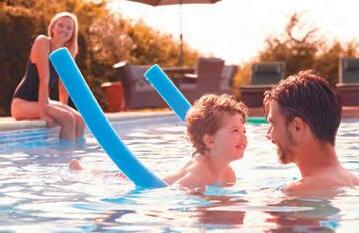


















Welcome to the Winter 2022 issue of Dignified Living, the magazine for healthy, active and engaged seniors. While this is the coldest, darkest time of year, there are still plenty of ways to fill the days with warmth and excitement. Social connection and exercise are both key to staying well all winter, and in this issue, we examine how to safely keep up one’s walking regimen all winter long (pg. 06) and uncover research highlighting the power of socialization (pg. 10). In our feature story (pg. 13), we meet Brian and Stephanie Felesky, a couple dedicated to philanthropy who inspire us to give back to others, too. For those who prefer to escape the cold, we highlight 10 great travel destinations for Canadian snowbirds (pg. 08). We hope this issue encourages you to get out, form friendships and make the most of this chilly season!
Do you have a personal story to share or know of an inspiring senior or expert in the field of healthy aging or wellness we should speak with? We’d love to hear thoughts and ideas on aging well. Email us at dignifiedliving@redpointmedia.ca
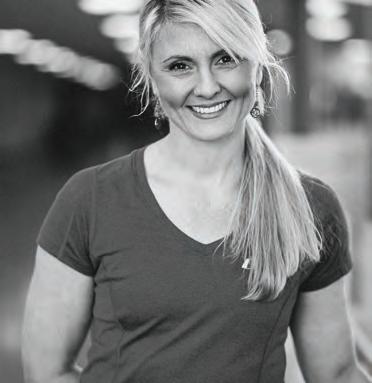
IN SEASON
BRAIN TEASERS

NOURISH . . . . . . 06
No more slip and slides; how balance training can keep you safe from falls, plus some winter-walking safety tips.
EXPERIENCE . . . 08
International intrigue; enjoy some warmweather travel spots beyond the U.S., offering adventure, accommodations and accessibility.

RESEARCH . . . . . 10
The benefits of socialization and the technology that is helping us live longer, healthier and happier lives all the way to 100.
This Calgary couple has spent decades giving back to the community and supporting those in need through charitable giving. Plus, read their guide on how you can also give back.
INSPIRE . . . . . . . . 12
Celebration of Life honours the legacy of past loved ones through laughter, remembrance and community.
Get the most out of Calgary’s picturesque winter by keeping active and enjoying all Canada’s sunniest city has to offer BY JENNIFER FRIESEN
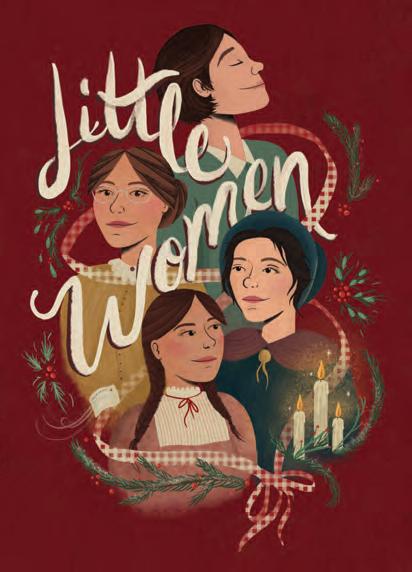
Step back in time and into Louisa May Alcott’s novel following the headstrong Jo Marsh as she navigates growing up surrounded by war, love, family and too many expectations of how a young lady should behave. This adaptation of Alcott’s classic by Kate Hamill is sure to warm your heart against the winter’s chill. Dec. 7 - 31, 2022
Arts Commons, Max Bell Theatre theatrecalgary.com
The holidays are a perfect time to bundle up the grandkids and start a new tradition with this annual event. The magical classic, The Nutcracker, has mesmerized families for generations, as troupes of ethereal dancers navigate a daring adventure alongside the Nutcracker Prince, Sugar Plum Fairy and Mouse King. Dec. 16 - 24, 2022 Southern Alberta Jubilee Auditorium albertaballet.com/the-nutcracker
After a pause during the pandemic, One Yellow Rabbit is bringing back full programming for its annual High Performance Rodeo this winter. For the 37th year, the beloved festival of the arts takes over Calgary’s downtown for three weeks, with a flurry of local and touring artists with the best in show. Expect theatre, music, dance, film and cabaret experiences.
Jan. 16 - Feb. 5, 2023, Various venues, hprodeo.ca/2023
To keep your body moving, there’s a variety of recreational programs available in and around the city. 3B Senior Fitness offers older adults in-person and virtual fitness training sessions in Calgary and surrounding area, with the goal of aging with dignity, preventing falls and maintaining independence. For in-person classes, Alberta Health Services offers a free biweekly, 45-minute group exercise program called Move 'n Mingle Fall Prevention Exercise Program for adults 65 and over. Learn more at albertahealthservices.ca.
Calgary holds the title of sunniest city in Canada (even in the middle of December), with plenty of natural areas to explore. There are parks specifically designed for families caring for loved ones living with dementia, including the private parks at StayWell Manor Village and the potential of a new dementia-inclusive public park that is being designed by Parks Foundation Calgary.
“Nature is very important, especially for the brain,” says Myriam Karnas, The Manor Village Life Centers’ regional recreation director. “But, in all stages of life, it's important to have different sceneries, different places to go and different purposes, such as growing flowers or conversing with family.”
The three parks at StayWell Manor communities are all wheelchair-accessible and fully secure for residents and their families to explore, enjoy the birds and bunnies, play games and engage in singalongs under the gazebo.
Parks Foundation Calgary’s plans for a dementiainclusive park, currently in design discussions, would offer additional space where families can enjoy the outdoors safely and without worry of wandering.
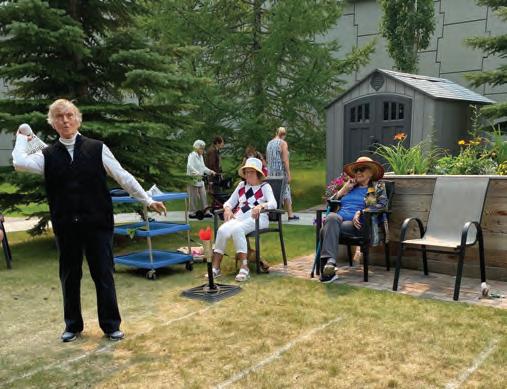

During winter storms, there’s nothing better than curling up with a good book — and the Calgary Public Library has you covered. Not only can you check out a novel and cozy up at home, you can stay at the library to admire the architecture or stick around for the always-changing programming and enjoy an author-reading event with the family. Learn more at calgarylibrary.ca.
Meeting up for coffee is a timeless pastime, and making new friends never gets old. Dementia Network Calgary partners with organizations to hold multiple weekly Conversation Café events at six different locations. The events are open to caregivers, loved ones and people living with dementia to share their experiences and struggles — or just discuss current events and build bonds. There are other community Conversation Cafés open to people who aren’t affected by dementia, including the longstanding Conversations that Matter group, which launched in the ‘80s. Run by Lois Faris, this multigenerational group moved online during the pandemic and brings together people from across the globe to share stories and build connections from home. Learn more at dementianetworkcalgary.ca or contact Lois Faris at loisfaris@yahoo.ca to get involved.
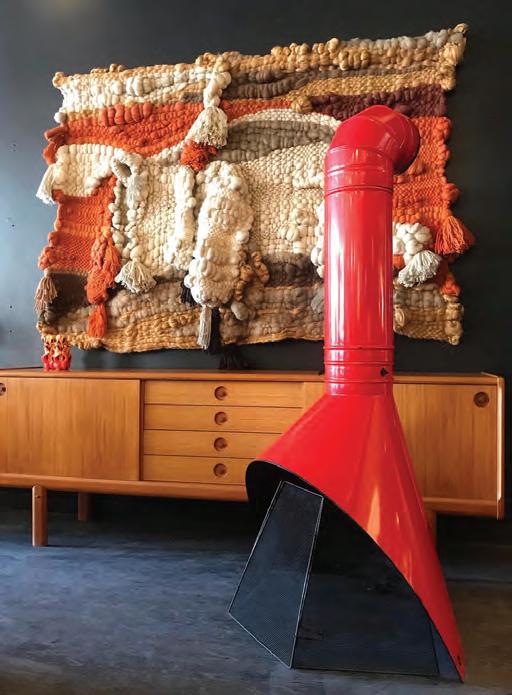
training modules with the help of an athletic therapist to improve their balance,” says Owen. “Enhancing the ability for Manor Village residents to move around their suites with minimal assistance, while equipping them to join family and friends for activities out in the community, provides them with greater confidence and an improved quality of life.”
Winter walking, in particular, poses unique risks for older adults looking to get outdoors


Walking is not only an excellent way to stay fit, but also essential to everyday quality of life. Whether we’re moving around the house as part of our daily routine or meeting up with friends for a leisurely stroll, walking is a life skill people of all ages perform year-round.
As people age, maintaining balance becomes more important to help avoid falling and suffering an injury. According to a 2021 report by the Public Health Agency of Canada, 20-30 per cent of older adults experience at least one fall each year, causing injury-related
hospitalizations 85 per cent of the time.
To help mitigate the risk of falls and improve strength and balance, residents at The Manor Village Life Centers in Calgary can take part in the Balance Tracking Treatment Program. Jeffrey Owen and Jeff Peach run the Balance Tracking Program at Manor Village. Owen and Peach begin by using balance-tracking systems technology, which uses sensors to assess a person’s fall risk.
“Individuals who enrol in the Balance Tracking Program can then work through programmed
Canadian seniors who experience a fall each year: 20-30%
Percentage of all hip fractures caused by falls: 95%
Cost of falls to health-care system per year: $2 billion
Percentage of falls causing hospitalization that occur at home: 50%
Falls can cause: chronic pain, reduced mobility, loss of independence, death
My favourite winter activity is going back inside.
Wear stable, fitting footwear
Remove objects you may trip over
Take precautions on wet or slippery surfaces
Use walking/ski poles for extra stability
Perform exercises to strengthen stabilizer muscles and joints and improve balance
for some exercise. As Peach points out, hiking and walking on slippery surfaces can result in unstable footing, especially on uneven surfaces.
“An inability to quickly correct an imbalance can lead to a fall, especially if an individual has other limitations to prepare for an immediate threat to balance, such as poor vision or reduced sensation from their feet,” says Peach.
Peach and Owen recommend performing a stationary exercise, altering the position of your feet to make standing more difficult. This helps train joints and muscles to respond to small imbalances. An athletic trainer can determine an optimal foot position and align your posture so the exercise can be done independently and safely. The same technique can be used while walking to target dynamic stability.
What you wear on your feet also impacts balance and stability, especially during winter months when improved traction is required. Using ski poles to increase the points of contact on the ground can also help mitigate falls.

Aside from the obvious causes of falls — slippery surfaces (ice and packed snow), uneven ground, steep hills, loose objects, etc. — some older adults experience a loss of strength, range of motion and balance due to a decrease in the physical tasks they used to perform daily.
One of the biggest issues seniors face when it comes to maintaining balance is hip stability and the postural chain, says Stephanie Marrello, a personal trainer at Spray Lake Sawmills Family Sports Centre in Cochrane.
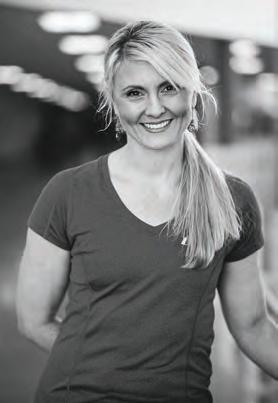
“We often do simple movements and like to train the ‘show muscles,’ for example, everything you can see when you look in the mirror,” says Marrello. “Think about training your back and hips more often, and that will be a game-changer, especially in winter when it gets slippery.”
Marrello says older adults can help improve balance by doing simple exercises, like standing on one leg for as long as you can.
“As you work to keep yourself balanced, you will notice your ankle is constantly shifting around to compensate for slight changes in your body position,” she says. “This constant shifting is working the supporting muscles of the ankles. You can even practice this while you brush your teeth.”
For Marrello, one key exercise is essential to performing the everyday movements we often overlook until they become problematic: squatting.
“Squat. The squat is the most effective move for your core and lower body strength; you need to do it to get in and out of your car, up and down from dinner, even the toilet,” she says.
“As we age, our muscles shrink and lose strength. This can cause falls and loss of strength. Keep active!”
have to factor in the need to fly to your destination — and possibly renting a car for a long period.

Costa Rica has been a favourite with snowbirds and retirees for many years now. The majority spend the winter in the northwest of the country, near the Pacific beaches and resort areas.
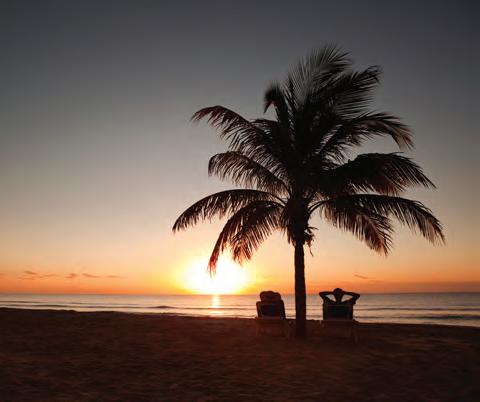

While the majority of Canadian snowbirds still flock to the United States, a growing number are becoming more adventurous and choosing exotic destinations further afield. This is even true when the Canadian dollar is weak against the U.S. dollar.
Airfare can be more expensive to reach these destinations, but the lower cost of living helps offset that cost.
Many international destinations offer a way for snowbirds to avoid the U.S. dollar and significantly reduce living costs, although you’ll
After the U.S., Mexico is the most popular destination for snowbirds. There are several destinations that appeal to snowbirds, including Puerto Vallarta on the Pacific Coast; the Mayan Riviera south of Cancun; and charming towns like San Miguel de Allende and Cuernavaca and the Baja California region in the northwest. Lake Chapala near Guadalajara is also a longtime favourite.
Panama is becoming a snowbird and retiree destination for Canadians. The warm, tropical climate, proximity to Canada and affordable lifestyle are big draws.
This Central American country is a best-kept secret for those who know about its natural beauty, including the Belize Barrier Reef, a UNESCO World Heritage site with
I googled my symptoms. Turns out I need a vacation.
spectacular marine life. Belize is an affordable destination that is beginning to attract snowbirds, many of whom have purchased affordable vacation homes for a fraction of the price as in the U.S.
The Dominican Republic plays host to many snowbirds looking to escape the winter. In towns like Sosua and smaller communities near Santo Domingo, snowbirds can find affordable apartments and villas to rent.
CUBA
Cuba has been home to snowbirds and long-stay visitors for many years now. Most rent apartments outside Havana near the beach, or in some of the smaller cities, such as Cienfuegos, Trinidad, Camaguey and Ciego de Avila.
Spain offers plenty of sunshine and milder temperatures than most of Europe. Some snowbirds discovered Spain as a winter haven long ago. Furnished apartments with kitchen facilities are very affordable in the winter. Again, a car rental is desirable, but not essential.
For those willing to cross the Atlantic to escape winter, Portugal is at the top of the list for snowbirds. Portugal is also a golf destination. Affordable long-term rentals are plentiful.
Snowbirds who choose Australia will be arriving during their summer! The fabled Gold Coast attracts many snowbirds with its wonderful beaches and location near the Great Barrier Reef. There are affordable long-term rental accommodations available.
This article originally appeared on snowbirdadvisor.ca — “Top International Destinations for Canadian Snowbirds.”
Snowbird Advisor is an essential one-stop resource for every Canadian snowbird, covering topics like travel, insurance, finances, accommodations, real estate, tax and legal issues and everything in between. You can also sign up for a free membership to get access to exclusive snowbird tips, tools, offers and more.
For more adventurous snowbirds, there’s Thailand and Southeast Asia, where living costs are extremely reasonable and you’ll find pristine beaches, wonderful islands and exotic experiences.
If you’re considering an international snowbird destination, you’ll want to consider the following factors: Safety – Safety can be an issue when you travel to foreign destinations.

Accessibility – Some destinations are harder to get to and from — and to get around, especially for those with mobility issues. Be sure to investigate with your needs in mind.
Health care – Health care might not be as accessible or highquality as in the U.S., and getting home for treatment can be more difficult.
Language – Travelling to most of these countries can represent a challenge if you don’t speak the language. English is more widely used in some destinations than in others.
Find more travel tips for Canadian snowbirds at SnowbirdAdvisor.ca.
The Harvard Study of Adult Development began in 1938, tracking the physical and mental health of an initial 268 participants across decades. The number of participants eventually grew to include the descendants of the initial participants.
One of the study’s revelatory findings is how close, positive relationships were better predictors of long and happy lives than genes, social class or IQ.

“Social isolation and loneliness are associated with a number of adverse or bad health outcomes,” says Dr. David B. Hogan, a specialist in geriatric medicine at the University of Calgary who was the first Brenda Stafford Foundation chair in geriatric medicine. “And, it would be equivalent to smoking, being overweight and being physically inactive. So, it’s as important in protecting your health as those factors.”
Though Hogan agrees with many of the key findings from the
study, he says it’s important to remember its initial participants were all white males from well-off families.
“You can imagine going to Harvard in the Depression years; it was a very select group,” he says. While it did eventually include women and people of more diverse socio-economic and ethnic backgrounds, Hogan cautions against generalizing the study’s findings to other groups. He adds that geriatric medicine usually focuses on social isolation and loneliness as two separate areas, rather than the broader approach of “socialization”
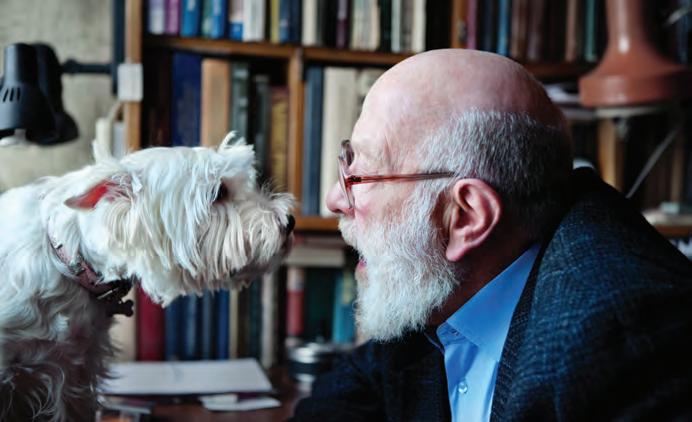
employed in the Harvard study.
“Loneliness is a sense of being alone. Social isolation is looked at as how many contacts you have with other people,” says Hogan. “People can feel lonely and have a lot of contact with people, and people who have only a few contacts may not feel lonely.”
Hogan says understanding and treating the impacts of loneliness and social isolation have become a priority — the U.K. established a Minister of Loneliness in 2018. And, while having good relationships in your 50s (a key predictor of health and happiness in the Harvard study) often comes down to luck, there are things you can do to improve them.
Hogan says seniors with passions (woodworking, knitting, backyard astronomy, photography, etc.) usually have more opportunities to interact with people who have similar interests. He encourages trying something new to break the cycle of loneliness, like volunteering, exercise or adopting a pet. He also suggests being mindful of your current relationships and how important they are to your health.
“Stay in touch and be more proactive than reactive,” he says. “Don’t just wait for someone to contact you, make the effort to contact them first.”
A Harvard University study suggests socializing with others could be as important to healthy aging as eating well, exercising and choosing not to smoke
How different tools and tech can make an extended life more pleasurable, fulfilling and fun

If there is one important lesson the COVID-19 pandemic has taught us over the past two years, it’s that technology, more than ever, is a necessity in our daily lives. Ever since the pandemic, everything from online food-delivery services to participating in school courses, concerts or medical appointments has become more accessible. However, it’s not just younger generations benefiting from technological advances; it’s also playing a key role in helping older adults improve their physical, mental and social well-being, enabling them to live longer and happier lives.
A 2021 census by StatCan found that more than 9,500 centenarians (a person who is 100 years old or more) live in Canada, which is a 16 per cent increase from 2016. Following a healthy lifestyle by getting plenty of exercise and eating a balanced diet to help prevent illnesses such as heart disease and cancer are key to living a longer life. But, including technology in our lives can also
BY MICHAELA REAMmake an extended life more pleasurable, fulfilling and fun. “Technology is just one tool among many out there, including social or medical interventions. So, we see technology as a way of filling many of the gaps other interventions and supports cannot provide,” says Dr. Alex Mihailidis, scientific director and CEO of AGE-WELL NCE, a Canadian network dedicated to supporting the creation of technologies and services that benefit older adults and their caregivers.
Since 2015, AGE-WELL has been funding and supporting research, development and commercialization of new technological solutions to empower older adults to live healthy, independent and engaged lives. For those living with dementia, new apps can help remind them to take their medication or go to appointments. The Steadi-One glove, invented by Steadiwear Inc., “intelligently” stabilizes the wrist joint in people living with essential tremors and Parkinson’s disease. The glove
allows older adults to maintain their ability to independently complete activities in their daily life. Braze Mobility’s blind-spot sensors attach to a wheelchair, transforming it into a “smart” wheelchair by providing audio, visual and vibration obstacle alerts to the user. Helpful for older adults living with cognitive decline or sensory impairments, the blind-spot sensors help them navigate safely and effectively and maintain their mobility.

When it comes to moving the dial in supporting older adults and providing the tools to live a happy, healthy and fulfilling centenarian life, every advance in technology is bringing us one step closer to such a future. In addition to AGE-WELL, other companies, such as Connected Canadians and Cyber-Seniors, are providing free and remote training and support for technology basics for mobile devices, computers, smart home tech and health technology.
“COVID provided opportunities to show where technology can be used as one of many tools,” says Mihailidis. “It’s helped to really shine a light and showcase the work we are doing in this area and how technology can make a significant difference.”
For more information on AGE-WELL, visit agewell-nce.ca.
bridges in their lives.”
Losing a loved one is never an easy experience, and how we deal with and process grief is unique to each person. But, when someone passes, they also leave behind a legacy that can be celebrated to help process that loss. Since opening in 2020, the Inn on Officers’ Garden has offered the opportunity to honour a person’s legacy through its Celebration of Life service. “It’s an honour to be able to offer this and celebrate [a loved one’s] contributions to the world,” says Jennifer Seutter, sales and event manager at Inn on Officers’ Garden. “It opens up this whole other avenue to celebrate a legacy.”

True to its name, a Celebration of Life offers a less-formal and structured service than a traditional funeral. It lets families and loved ones celebrate how a person lived and, as a result, creates a more relaxed atmosphere.
“The beautiful thing is that it’s not a formal funeral or a wake;
it’s a time to celebrate a person’s legacy,” explains Seutter. “It feels serene for family and friends who are organizing the event.”
Past celebrations at the Inn have seen guests sharing experiences, raising toasts, displaying memorable photos or enjoying a meal. There remains an opportunity to grieve, but the grieving family is surrounded by caring friends, family, co-workers and neighbours. It’s a chance to heal through memories and shared happiness with lots of laughter.
When Jim Love’s mother passed away at 94, he knew he wanted to host a Celebration of Life to honour her legacy. “She was a wonderful person and so kind and good to family, friends and those in the community,” says Love. “[Celebrations of Life] are not just for the person who has died, but also for those who remain, to build
Love worked together with Antoun Roumia, the general manager of Inn on Officers’ Garden, to plan and organize the celebration. The Inn can accommodate anywhere from 10 to 120 people, and guests can book events in various spaces, such as the Event Hall or Officers’ Pub. Love customized the celebration to honour his mother, adding a special detail: As guests arrived and gathered in the main lobby to mingle before heading to the Vino Chat room for the main celebration, they were greeted with music being played on a grand piano — a special homage to Love’s mother, who had loved to play the piano herself.
“It brought together people who had all been connected with my mother, but also who hadn’t met before and had that relationship in common,” says Love. In addition to the in-person portion, the celebration was livestreamed for those who couldn’t attend in person. “She was well loved all through her life by family and many friends, so we streamed it from coast to coast.”
For the Inn, the Celebration of Life is a special opportunity for people who have become an angel and have a legacy they want to share with family and friends one last time.

This unique celebration service offers an alternative way to acknowledge and honour the passing of a loved one
 BY ELIZABETH CHORNEY-BOOTH | PHOTOGRAPHS BY JARED SYCH
BY ELIZABETH CHORNEY-BOOTH | PHOTOGRAPHS BY JARED SYCH
Giving back to the community, from financial donations to volunteering, can greatly enrich a person’s life. Just ask Brian and Stephanie Felesky. The Calgary-based couple has spent decades working with, supporting and even developing various community-based organizations, lending a hand wherever possible to make Calgary a city they can be proud of. As leaders in philanthropy and community-building, Brian and Stephanie’s contributions to the city are many. Still, the Feleskys maintain that, through supporting those in need and making their city a better place, they’ve gained as much from their charitable work as they’ve given.
Brian and Stephanie were not born in Calgary, but both moved here as children, growing up along with the city and planting roots by building their careers and family in the heart of Calgary.
Brian made his mark in the world of law, cofounding the Felesky Flynn LLP tax law firm, and has acted as an advisor to both businesses and government. Stephanie has worked on numerous endeavours, including positions in real estate and other fields.
By most measures, the Feleskys have lived a wonderful life — they raised their family in a beautiful home, have six grandchildren and a wide circle of friends. But, through all that good fortune, both have made community work a priority, stepping up and offering their time and resources wherever they saw a need. As with many people, their community contributions started helping out with fundraising for their children’s interests, snowballing into working for other causes and eventually landing them on various boards of directors, giving them the experience and
connections to co-found their own charitable organizations.
“We’ve always been of the view that we’ve been terribly lucky and blessed in this community,” Brian says. “From bottle drives when the kids were playing hockey and tennis, to having the privilege of leadership with the United Way and being able to do work with the homeless, we’ve been lucky. The old adage that whatever you give you get back in spades is so true.”
The list of organizations the Feleskys hold near and dear is lengthy: Stephanie was the board chair at the United Way, the founding director at the Calgary Homeless Foundation, a member of the Calgary Police Commission and on the Board of Governors at the University of Calgary.
She is still on the boards of the Calgary Police Foundation, West Campus Development Trust and the Calgary Foundation, which provides capital for affordable housing. She was also on the national board of the Institute of Corporate Directors for six years.
Brian joined Stephanie by working with the United Way and was also co-founder and co-chair of HomeFront Calgary, co-founder of Awali — a Calgary community partnership with the Aga Khan Network to train teachers in East Africa — and co-founder of the Alberta ORGANization Group, which advocates for organ donation. He also donates his expertise to various endeavours related to tax law. Both are Members of the Order of Canada and have
received many other recognitions and honours.
These examples are just part of a long and varied list of organizations and commitments the Feleskys have been involved with. Though Stephanie and Brian’s lives are filled with board meetings, gala dinners and countless hours of hard work, they’ve found that Calgary’s volunteer culture is contagious, and all that philanthropy has brought tremendous meaning to their lives.
“You get as much as you give in many ways with the friendships and the relationships you form,” says Stephanie. “It’s about that pleasure of being able to connect with people. You may not be a chartered accountant, but, if

you sit on a finance committee or help with finances through a volunteer organization, you can learn a lot. In many ways, a volunteer contribution gives you an opportunity to expand yourself.”
Today, Brian and Stephanie are both in their 70s, but they show no sign of slowing down when it comes to their projects. Stephanie is still incredibly passionate about police and military-related initiatives, as well as coming up with solutions for homelessness and housing insecurity, and recently became co-chair of fundraising at Foothills Medical Centre’s neonatal intensive care unit. Brian’s recent focus has been on inspiring mature Calgarians, particularly those who have been pushed out of oil-and-gas jobs by the economic downturn, to share their experience and wisdom with young innovators to expand Calgary to be a more innovative economy and a leader in organ donations and transplantations. As a result, he is one of the co-
founders of the Top 7 Over 70 gala, as well as InterGen, a not-for-profit platform that connects senior professionals with up-and-coming entrepreneurs.

Even after all these years of community work, Brian and Stephanie get excited when they speak about their initiatives and are humbled by the suggestion they’ve helped to build a better and brighter version of Calgary. Forming relationships with other local philanthropists, being able to celebrate people from all walks of life in the city and even bringing their children and grandchildren into the philanthropic fold has been one of the biggest drivers of their ongoing work.
“By doing work in the community, you have the privilege of meeting people who share the same type of values you do,” Brian says. “It’s remarkable how many good friends we’ve developed from our community work. It’s inspiring to stand on their shoulders and learn from them.”
“The old adage that whatever you give you get back in spades is so true.”
—Brian Felesky
Getting involved in community work can be daunting, but, despite their spectacular volunteer resumes, even Brian and Stephanie Felesky started small, volunteering with initiatives related to their kids’ school and sports activities. The Feleskys’ biggest advice is for prospective volunteers to choose a cause that reflects their interests, elevate others around them and celebrate the contributions of others. This could mean doing a shift at the Calgary Food Bank, getting involved with an animal shelter or asking a friend who volunteers for an organization like the United Way if there are events that can use some extra hands during the holiday season. Getting your foot in the door with something that resonates with you is the first step.
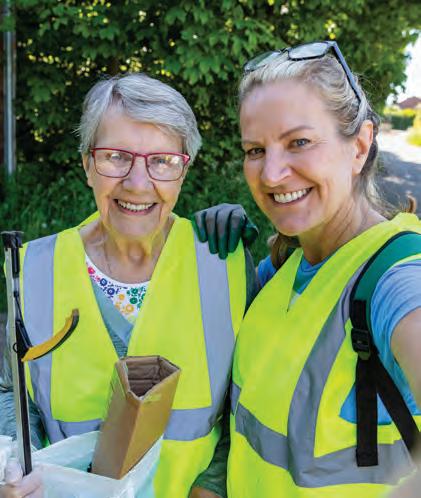
“Develop your interest and passion and look for ways to expand it,” Stephanie says. “Often, I think people are scared off by thinking they have to take
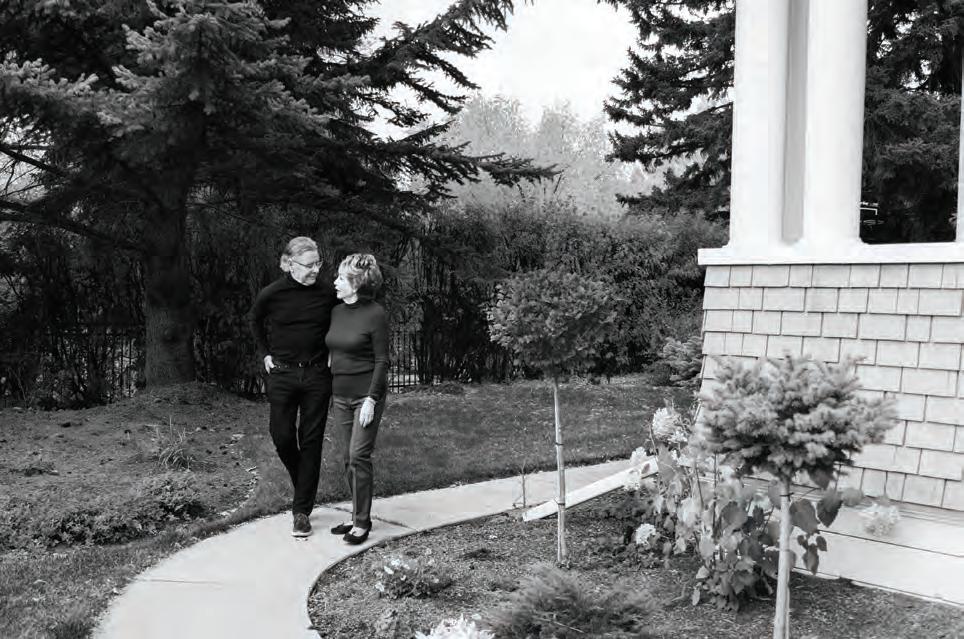
on a huge job.

Stephanie points to the three things charitable organizations need — talent, time and treasure — stressing that it’s about bringing what you can to the table. If you’re a skilled carpenter and can help with an organization’s building projects, that donation of talent will be much appreciated. If you can spend a day or two wrapping gifts for kids in need, that time is as good as a cash donation. Of course, if your time is limited, but your funds are plentiful, monetary donations are also essential to any charitable organization.
Whatever you do, make sure it’s coming from the heart, says Brian. While community work can benefit everyone involved, his biggest tip is to approach any philanthropy with the right passion.



“But, if you genuinely believe in what you’re doing,” he says, “you’ll never stand so tall as when you kneel to help a child or a person in need.”
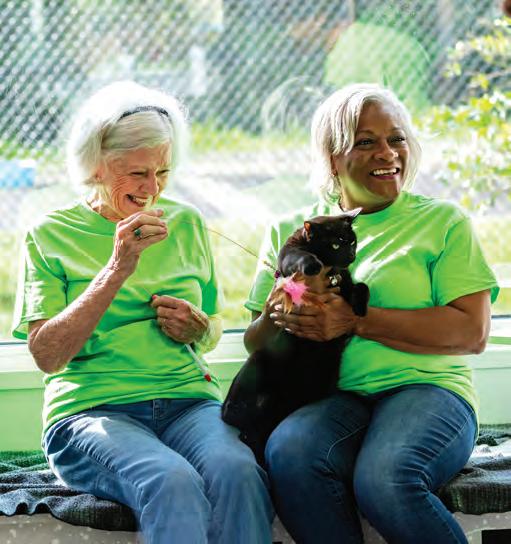
But, if they get involved with even doing a little piece, doors will open and they’ll get the opportunity to learn and expand.”
1. How many time zones are in Canada?
2. Quebec is the world’s top producer of this condiment.
3. In which year did Canadian law declare women as “persons”?
4. This central Canadian city is considered the Slurpee capital of the world.
11. Which of these movies was not filmed in Canada? 1) Sleepless in Seattle 2) New York Minute 3) Chicago
12. This actor, who became famous playing a Scott (“Scotty”) on TV, was actually Canadian.
13. A group of Canadian experimental filmmakers invented this technology for Expo 67.
14. Drake still gets royalties from his appearance on this 2000s teen drama.
15. This British Columbia hospital is one of the most popular filming sites in Canada.
5. What is the total height of Niagara Falls?
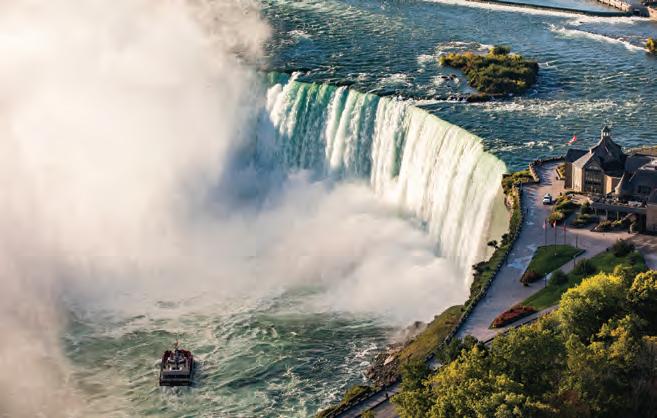
6. This is the most-consumed fruit in Canada.
7. The tip of this province is known for its “singing sands.”
8. You can find the world’s highest tides here.
9. Brothers Jimmy and Dan MacNeil of Brantford, Ont., drove this vehicle across Canada in 2001.
10. In 1955, Quaker Oats gave this away in its cereal boxes.
16. This is Canada’s most-played sport.
17. “He shoots, he scores” is the famous sports phrase of who?
18. Who was the first Canadian to win an Olympic gold medal in 1900?
19. Who is the only Canadian to win the NBA MVP award?
20. This national sport originated with the Ojibwa First Nations, who often used it to train warriors.

Trivia Answer Key: �1 Six; �2 Maple syrup; �3 1929; �4 Winnipeg; �5 167 ft.; �6 Banana; �7 Prince Edward Island; �8 The Bay of Fundy in Nova Scotia.; �9 A Zamboni; �10 Real estate in the Yukon; �11 Sleepless in Seattle; �12 James Doohan; �13 IMAX; �14 Degrassi: The Next Generation; �15 Riverview Hospital in Coquitlam.; �16 Golf; �17 Foster Hewitt; �18 George Orton for the 2500 m steeplechase; �19 Steve Nash; �20 Lacrosse
ILLUSTRATIONS: (LEFT) LEOPATRIZI, COURTESY i STOCK; (RIGHT) DUNCAN1890, COURTESY i STOCK







Schedule a beautiful event to remember and celebrate that important person in your life.


I think of things you used to say and all that you would do, At some point, every single day my thoughts turn to you.
COVID has shown Canadians that it is Healthier to CELEBRATE than it is to Mourn.
Our impressive spaces are available for guests from 15 to 100 people who will come together to share stories, reminisce and remind each other what is important in life
A variety of options are available to meet your food and beverage budget: a sit-down meal, a buffet, and even finger foods.
Ask about our special rates for audio/video as well as our professional Companion Journals to memorialize this special event .


Our special Celebration of Life events are just $380* for two hours

Life goes by, much too fast. You were there, with just one call. My Memory of you, will always last. We Celebrate Your Life, with one and all. *Taxes, gratuity, food & beverages extra, subject to space availablity.
150 Dieppe Drive SW centrally located off Crowchild Trail in the SW community of Currie Green Campus